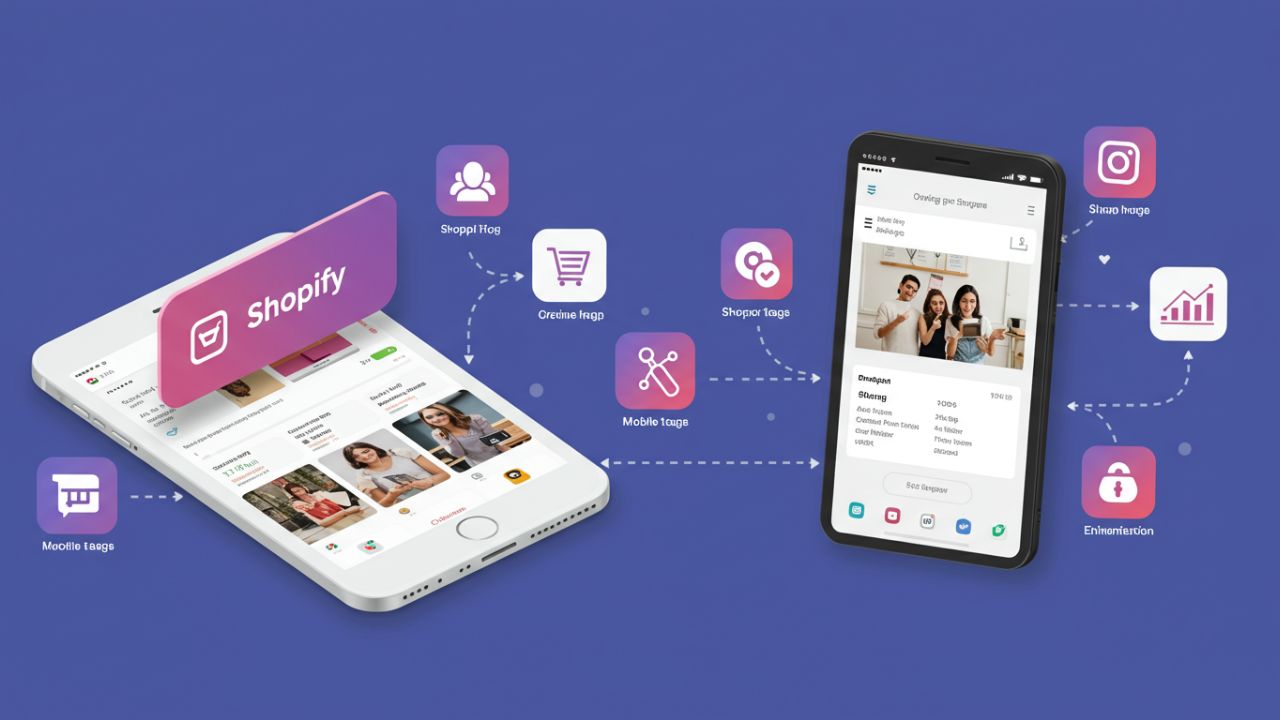In today’s fast-paced digital commerce landscape, seamless integration between social media platforms and e-commerce websites is more than a luxury—it’s a necessity. For entrepreneurs and businesses using Instagram to build their brand presence and engage customers, connecting their Instagram accounts with their Shopify stores opens up unprecedented opportunities for sales and growth.
This comprehensive guide explores how to integrate Shopify with Instagram effectively, enabling direct product sales through your Instagram feed. We’ll cover the necessary steps, tools, best practices, and case studies to help you leverage this powerful integration.
1. Why Integrate Shopify with Instagram?
a. Explosive Growth of Social Commerce
Social commerce is booming. Instagram, with over 1 billion monthly active users, is one of the top platforms where users discover new products. According to Statista, global social commerce sales are expected to reach over $2.9 trillion by 2026.
b. Shorten the Buyer Journey
By integrating Shopify with Instagram, customers can discover, view, and purchase products directly within the Instagram ecosystem, drastically reducing friction and increasing conversions.
c. Build Brand Authenticity
Instagram allows for authentic storytelling through posts, Reels, Stories, and Lives. Pairing this engagement with shoppable posts can drive higher customer trust and loyalty.
2. Requirements for Integration
To integrate Shopify with Instagram Shopping, ensure you meet the following prerequisites:
- A Shopify account with a live store and at least one product.
- A Facebook Business Manager account linked to your Instagram Business account.
- An Instagram Business or Creator account.
- A Facebook Page connected to your Business Manager.
- Your Shopify store must comply with Facebook’s Commerce Policies.
3. Step-by-Step Integration Process
a. Step 1: Convert to an Instagram Business Account
- Go to your Instagram profile.
- Tap the hamburger menu ☰ > Settings and privacy.
- Select Account > Switch to Professional Account.
- Choose Business > Connect to Facebook Page.
b. Step 2: Add Instagram as a Sales Channel in Shopify
- Log in to your Shopify Admin Panel.
- Go to Sales Channels > Click “+”.
- Select Facebook and then enable Instagram Shopping.
c. Step 3: Connect Your Facebook and Instagram Accounts
- Follow the on-screen instructions to connect your Facebook account.
- Select the Facebook Business Manager, Facebook Page, and Instagram account.
- Confirm your Commerce Account and Data Sharing Settings.
d. Step 4: Product Catalog Syncing
- Once connected, Shopify automatically syncs your product catalog with Facebook Commerce Manager.
- Ensure each product has a title, description, price, and image.
- Approve products to be reviewed by Instagram (may take a few days).
e. Step 5: Enable Instagram Shopping
- On Instagram, go to Settings > Business > Shopping.
- Select the product catalog associated with your store.
- Submit for review.
- Once approved, enable product tagging.
4. Creating Shoppable Instagram Content
Once integration is complete, you can begin tagging products in:
- Instagram Posts (up to 5 products per image or video)
- Stories (with Product Stickers)
- Reels (tag products in short-form video content)
- Live Shopping (for real-time interaction and selling)
5. Tips to Maximize Sales with Shopify & Instagram Integration
a. Use High-Quality Visuals
Instagram is a visual-first platform. Use professional-quality photos and videos that showcase your products in real-life settings.
b. Tell Stories
Instead of just posting product photos, tell a story around them. Showcase behind-the-scenes footage, tutorials, or customer testimonials.
c. Leverage Hashtags and SEO
Use targeted hashtags and SEO-friendly captions to increase discoverability.
d. Run Instagram Ads with Product Tags
Amplify your reach by running paid ads that include product tagging, leading directly to your Shopify store.
e. Utilize Instagram Insights
Monitor performance metrics such as impressions, reach, website clicks, and product views to optimize your strategy.
6. Case Studies
a. Minimalist Jewelry Brand
This small brand grew their sales by 300% in six months after integrating Shopify with Instagram Shopping. Their strategy involved:
- Influencer collaborations.
- Weekly Reels featuring new arrivals.
- Story polls to gauge interest.
b. Handmade Soap Company
By posting “how it’s made” videos and tagging their products, this company doubled their monthly revenue.
c. Streetwear Apparel Store
Targeted Instagram ads featuring product tags led to a 7x ROAS (Return on Ad Spend) for this Shopify store.
7. Common Challenges and How to Overcome Them
| Challenge | Solution |
|---|---|
| Product Not Approved by Instagram | Ensure all product details are complete and comply with Facebook Commerce Policies. |
| Account Not Eligible | Confirm all eligibility requirements are met and review Business Manager settings. |
| Catalog Sync Issues | Resync from Shopify admin panel or use Facebook Catalog Manager directly. |
| No Option to Tag Products | Check if Instagram Shopping is fully approved and enabled in account settings. |
8. Advanced Features & Tools
- Dynamic Product Ads: Retarget website visitors on Instagram with personalized product ads.
- Shop Tab on Instagram Profile: Customize and arrange products for easy discovery.
- Third-party Shopify Apps: Tools like Instafeed, Covet.pics, and Taggshop enhance integration and visual merchandising.
9. Conclusion
Integrating Shopify with Instagram is a game-changer for modern e-commerce brands. It creates a seamless customer journey from discovery to purchase, right within the social media app your audience already loves. By following best practices, telling authentic stories, and leveraging powerful tools, you can transform your Instagram profile into a dynamic sales channel that drives real business growth.
Whether you’re a seasoned entrepreneur or just starting your e-commerce journey, there’s no better time to tap into the power of Instagram Shopping integrated with Shopify.

Leave a Reply